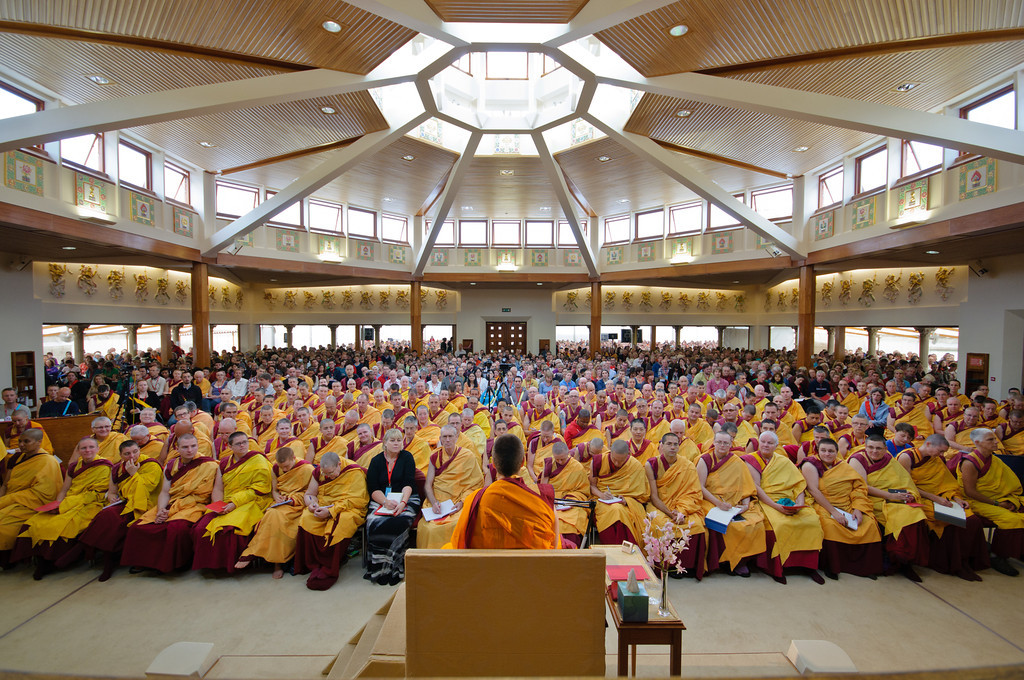Kadampa Buddhism
A modern Buddhist tradition
Kadampa Buddhism is a Mahayana Buddhist school founded by the great Indian Buddhist Master Atisha (AD 982-1054).
His followers are known as ‘Kadampas’. ‘Ka’ refers to Buddha’s teachings, and ‘dam’ to Atisha’s special Lamrim instructions known as ‘the stages of the path to enlightenment’. Kadampas, then, are practitioners who regard Buddha’s teachings as personal instructions and put them into practice by following the instructions of Lamrim.
The Kadampa tradition was later promoted widely in Tibet by Je Tsongkhapa and his followers, who were known as the ‘New Kadampas’.

Transforming daily activities into the path
By integrating their knowledge of all Buddha’s teachings into their practice of Lamrim, and by integrating this into their everyday lives, Kadampa Buddhists are encouraged to use Buddha’s teachings as practical methods for transforming daily activities into the path to enlightenment.
The great Kadampa Teachers are famous not only for being great scholars but also for being spiritual practitioners of immense purity and sincerity.
Lineage
The lineage of these teachings, both their oral transmission and blessings, was passed from Teacher to disciple, spreading throughout much of Asia, and now to many countries throughout the western world.
Buddha’s teachings, which are known as ‘Dharma,’ are likened to a wheel that moves from country to country in accordance with changing conditions and people’s karmic inclinations.
The external forms of presenting Buddhism may change as it meets with different cultures and societies, but its essential authenticity is ensured through the continuation of an unbroken lineage of realized practitioners.
Modern Kadampa Buddhism
Through the activities and dedication of the renowned Buddhist Master, Venerable Geshe Kelsang Gyatso, Kadampa Buddhism has spread to many countries in recent years.
Venerable Geshe Kelsang Gyatso has worked tirelessly to spread Kadampa Buddhism throughout the world by giving extensive teachings, writing many profound texts on Kadampa Buddhism, and founding the New Kadampa Tradition.
